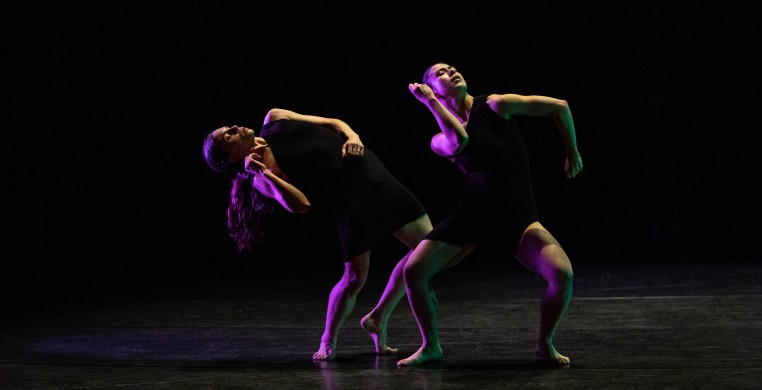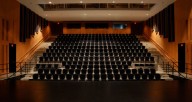With a brand new rehearsal space couched in the famed Water Tower Place and the one-year-anniversary celebration of hiring Artistic Director Linda-Denise Fisher-Harrell, excitement is in abundance at Hubbard Street Dance Chicago. Our city can expect big things from the beloved, 44-year-old dance company. Re/Connect, Hubbard’s spring concert series, rises to the occasion with two programs spanning two extended weekends.
On March 2nd at the Museum of Contemporary Art, the premiere of Program A started off with a subtle bang. Composed of one revival, one company premier, and two unforgettable world premieres—the quartet of masterpieces struck an emotionally-charged chord in the half-filled theater. Each work, as utterly captivating as the next, was decidedly singular in content and style. The program was a beautiful ode to, and exhibition of, the current dance landscape in America.
When the curtain rose on Amy Hall Garner’s world premiere, “As the Wind Blows,” I didn’t know what to expect. A warm cyclorama reflecting purple, orange, and yellow light off the back wall created a silhouetted image on the stage. A lone, unidentifiable dancer stood stationary, clearly anticipating the start of the twenty-something minute dance. The singularity of the opening image proved an intelligent jumping-off point for the lively choreography to come.
Ripe with rich, effortless partnering and sass-filled moments of connection, the piece offered a jovial start to the program. Garner’s ability to choreographically highlight striking musical details, hidden under complex layers of instruments, felt familiar to me—evocative of Martha Graham’s connection to music in her beloved “Appalachian Spring,” not surprising as Garner also used Aaron Copeland’s music in the piece. The Hubbard dancers tackled the technically-demanding movement with an easy-to-appreciate ferocity, setting the bar high for what was to come next.
Ohad Naharin’s “B/olero” and Lar Lubovitch’s “Little Rhapsodies” filled the middle segment of the evening’s performance. Naharin’s duet, performed exquisitely by Alyssa Allen and Jacqueline Burnett, was short, succinct, and alien-like. With neon purple and green lights delicately reflecting off their skin, the pair moved with clear strength and intensity, executing movements so deceptively complex, one might believe they could perform them in their own home.
I wanted more from the duo as soon as the curtain closed, but the oddity of Naharin’s “B/olero” provided a compelling juxtaposition to the timelessness of Lubovitch’s “Little Rhapsodies.” The white jazz-shoed trio of dancers—Andrew Murdock, Kevin J. Shannon, and Michael Garcia—executed physically demanding skips, dips, and head bobbles with contagious smiles. The piece felt mature in the sea of contemporary works surrounding it.
As if everything prior weren’t enough, Princess Grace Choreography Fellow, Darrell Grand Moultrie closed out the program so expertly- crafted by Fisher-Harrell. In an ode to Harlem and the Gospel music Moultrie grew up with, the world premiere of “Dichotomy of a Journey” transported audience members to a church worshiping dance and art in its most divine form. The stage—complete with a smoky haze and stained-glass-inspired lighting—was a sacred space for the company dancers, who hit every battement, pirouette, subtle gesture, and audible breath with a palpable level of authority.
In a moment of what I would call one-of-a-kind perfection, dancer Andrew Murdock performed a segment of the piece entitled “Vision.” In the hauntingly white lit space, Murdock exhibited unparalleled control of his body to gospel music that, by definition, should’ve been too big for movement to live up to. Murdock made the music feel, dare I say, small in comparison to his performance. Tears streamed down the faces of audience members next to me, and “amens” could be heard echoing throughout the theater.
Hubbard Street has the choreographers, collaborations, and grandiose ideas that excite any dance lover, but more importantly, they have talented dancers to back up anything they can envision. Every dancer on that stage was a true individual while contributing to the collective whole. Although I, unfortunately, won’t be able to attend Program B, premiering next Wednesday, I can only imagine it’ll be equally captivating, compelling, and relevant. The program includes a reprise of Fall Series’ “Jardí Tancat” by Nacho Duato, Jermaine Maurice Spivey’s “The Seen,” and another chance to catch Moultrie’s “Dichotomy of a Journey”—which, in my humble opinion, is reason enough to go.


